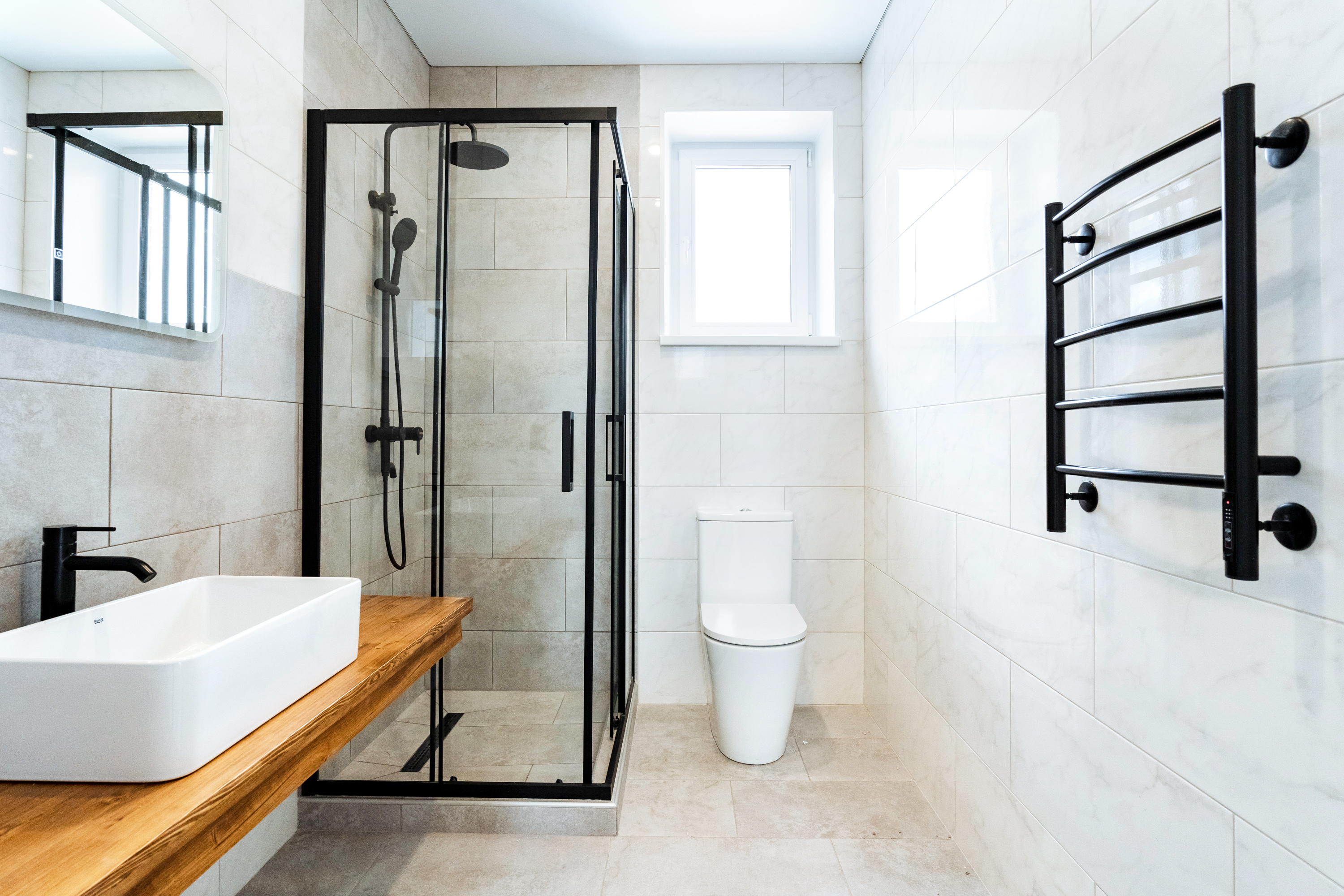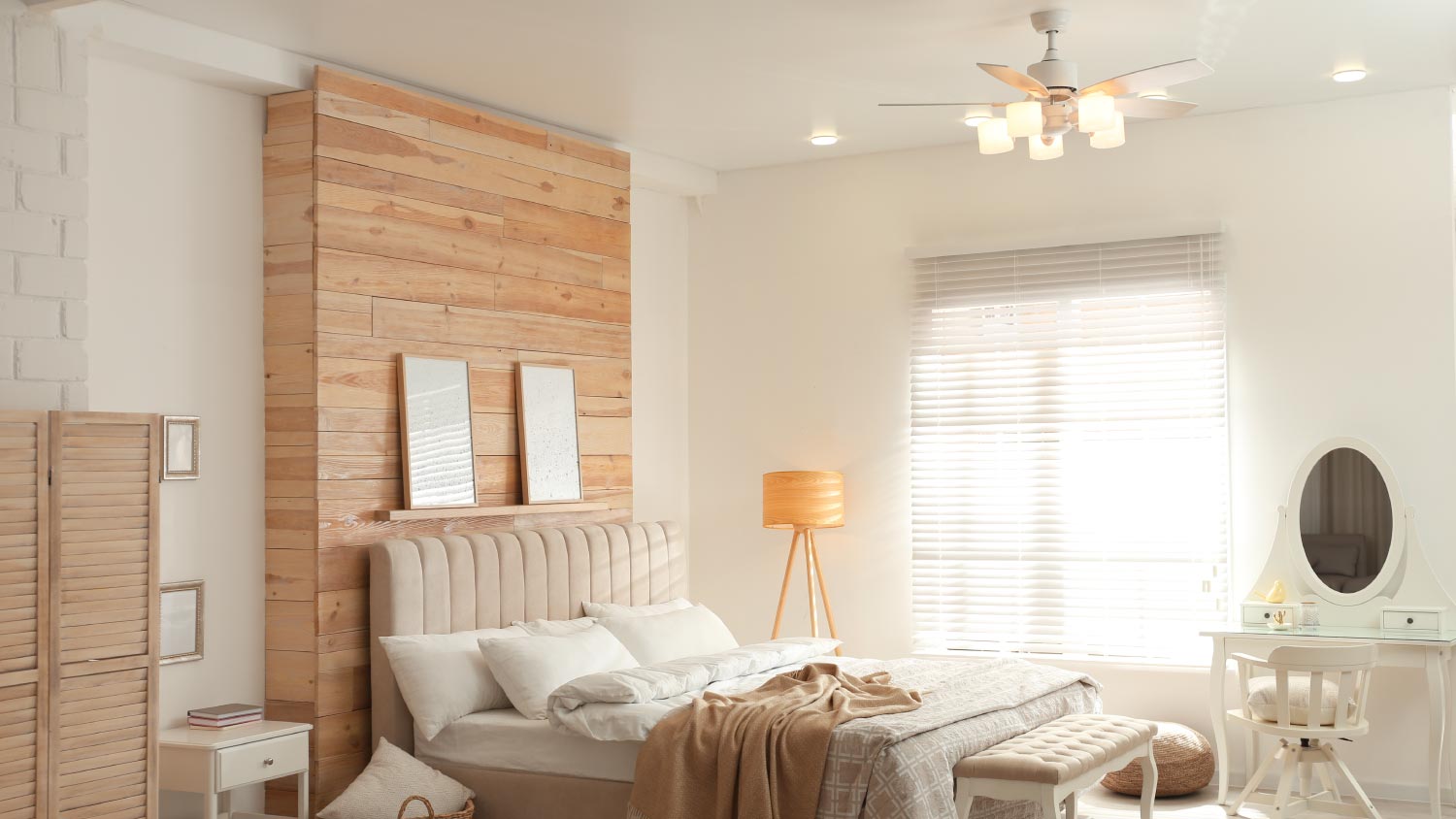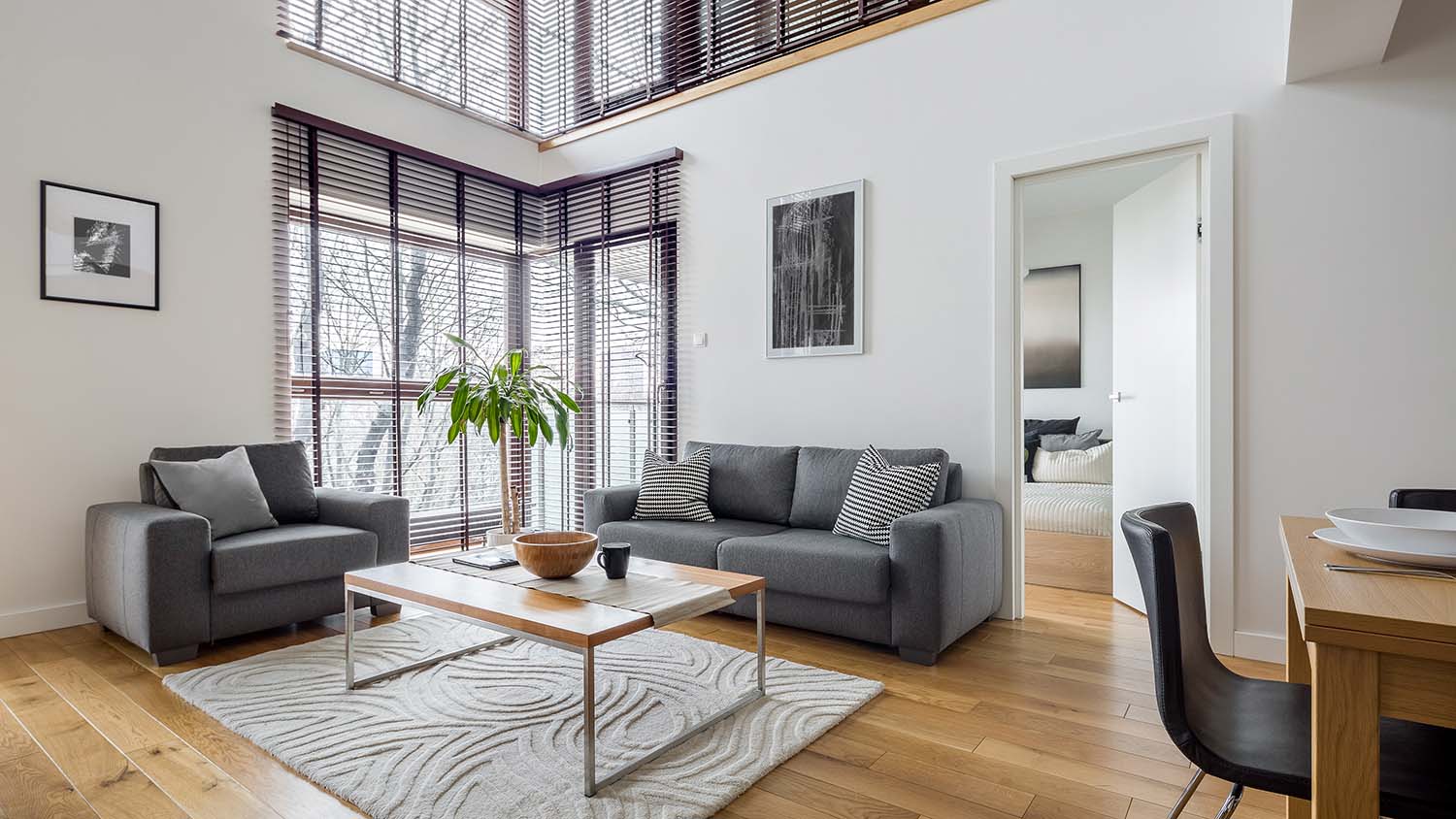
Discover the cost to design a bathroom, including key price factors, to help you plan your remodel with confidence and avoid budget surprises.
Built-in wardrobes cost $3,500 on average, with most homeowners paying between $1,500 and $8,000. Your total depends on size, materials, customization, and labor.


Built-in wardrobes cost $150 to $500 per linear foot.
Size, materials, and customization drive the total cost of installing a built-in wardrobe.
Professional installation costs $50 to $150 per hour, ensuring durability and a seamless look.
Additional features like lighting or organizers increase the cost.
Built-in wardrobes boost home value and offer an ROI of 50% to 70%.
This article was created using automation technology and thoroughly fact-checked and edited by an Angi Editor in accordance with our AI policy.
Built-in wardrobes cost an average of $3,500, with most homeowners spending between $1,500 and $8,000 for installation. Costs can range from $500 for basic units to $15,000 or more for high-end, fully customized wardrobes. Pricing is often calculated per linear foot, with rates from $150 to $500 depending on materials and features.
Let’s explore what goes into the built-in wardrobes cost, why this project can make a big difference in your home, and how to budget for every step—from materials to labor.
The size of your built-in wardrobe is one of the biggest factors in determining your final cost. Larger wardrobes require more materials and labor, which increases expenses. Standard sizes—like a simple reach-in unit—are more affordable, while custom dimensions for wall-to-wall or floor-to-ceiling storage will cost more.
Multi-unit installations, such as corner wardrobes or expansive closet systems, also impact the budget. Most pros price by linear foot or square foot, so the bigger the footprint, the higher the price.
| Wardrobe Size | Width (Ft.) | Average Cost Range | Cost per Lin. Ft. |
|---|---|---|---|
| Small | 3–5 | $500–$1,500 | $150–$250 |
| Medium | 6–8 | $1,500–$4,000 | $200–$350 |
| Large | 9–12 | $4,000–$8,000 | $250–$400 |
| Custom | Over 12 | $8,000–$15,000+ | $300–$500 |
The type of built-in wardrobe you select will affect your project’s cost and function. Reach-in wardrobes are compact and affordable, while walk-in closets or floor-to-ceiling styles provide more storage at a higher price.
Specialty options—like corner units, sliding doors, or mirrored panels—can add both value and cost. Each type has its own pros and cons in terms of space use, accessibility, and aesthetics.
| Type | Average Cost Range | Pros | Cons |
|---|---|---|---|
| Reach-in | $500–$2,000 | Space-saving, easy to access | Limited storage |
| Walk-in | $4,000–$15,000+ | Maximum storage, customizable | Requires more space, costly |
| Floor-to-ceiling | $3,000–$10,000 | Uses all vertical space, sleek | Complex install |
| Alcove | $1,500–$5,000 | Ideal for awkward spaces | Limited by alcove size |
| Sliding door | $2,000–$8,000 | Saves clearance space, modern look | More expensive hardware |
| Hinged door | $1,500–$6,000 | Classic style, wide access | Needs door clearance |
| Open shelving | $1,000–$4,000 | Easy access, airy feel | Exposed to dust/clutter |
| Corner unit | $2,000–$7,000 | Maximizes awkward spaces | Custom work adds cost |
Where you live and where you install your wardrobe both play a role in your total cost. Urban areas and regions with a high cost of living often have higher labor rates and material costs. In contrast, rural areas may offer lower prices but fewer choices. Material availability and market demand can also affect what you pay.
Within your home, the room you choose for installation matters. Bedrooms are the most common, but hallways, attics, and entryways may require extra prep or structural changes. Upper floors, tight spaces, or areas needing demolition will increase labor and add to the final bill.
Several factors come together to shape your total built-in wardrobes cost. Let’s break down the main drivers below.
Built-in wardrobes installation involves carpenters, closet system specialists, or general contractors. Labor for local closet designers is estimated per hour, per project, or linear foot. Hourly rates range from $50 to $150 depending on region and expertise.
Complex projects or high-end installations can drive up labor time and cost, especially where detailed carpentry or finishing is involved. Minimum service charges and higher rates in busy or high-demand areas can also impact your budget.
Permits are required if installation involves structural changes, electrical wiring for lighting, or significant modifications to your home. Fees range from $50 to $500, depending on local regulations. Always check with your municipality or building department to determine what’s necessary before starting your project, as skipping permits can lead to fines or costly rework.
Adding custom features—like integrated lighting, built-in drawers, shoe racks, or jewelry organizers—will increase your cost. Specialty finishes, decorative moldings, or integrated seating can add several hundred to several thousand dollars to the total. Smart features, such as LED lighting or charging stations, also raise the price but can make your wardrobe more functional and modern.
Additional factors that can affect installation costs include:
Project complexity, such as angled ceilings, alcoves, or built-ins around windows and doors, requires custom planning and skilled installation.
Accessibility challenges, like tight stairwells or upper floors, can add to labor and delivery costs.
Site preparation, including demolition of old closets, wall repairs, or delivery fees, adds to the bottom line.
Post-construction cleanup and debris removal may be included or billed separately.
Interior design fees for custom plans or 3D renderings can range from $100 to $1,000.
Inspection costs might apply if your municipality requires them for significant renovations.
Beyond installation, several ongoing or one-time costs are worth keeping in mind.
Many installers and manufacturers offer warranties covering materials and workmanship for one to five years. Extended warranties may be available for an extra $100 to $500, providing peace of mind for high-value custom installations.
Routine cleaning is simple—dusting, wiping down shelves, and checking hardware. Over time, you might need to replace hinges, drawer slides, or handles, costing $20 to $150 per repair. Touch-up painting or refinishing wood surfaces can run $100 to $500, depending on the extent of the work.
Sales tax on materials and installation services varies by state and locality, often calculated as a percentage of the total bill. Check your installer’s invoice to see how taxes are applied in your area.
You can install built-in wardrobes yourself or hire a professional. Each option has clear advantages and considerations.
DIY installation means you’ll pay only for materials, tools, and supplies. Materials for a simple unit can cost $500 to $2,000. You’ll save on labor but need skills in carpentry, measuring, and finishing. Expect to spend several weekends on a medium-sized project. Mistakes or improper installation can lead to extra costs for rework or repairs and may void warranties.
Professional installers bring experience, efficiency, and access to better materials. Installation costs, including labor, add $1,000 to $5,000 to your total, depending on complexity. Pros can complete the job in a few days and often provide warranty coverage. Choosing a reputable installer involves checking references, viewing past projects, and confirming licensing and insurance.
| Installation Method | Total Average Cost | Pros | Cons |
|---|---|---|---|
| DIY | $600–$2,500 | Save on labor, flexible timeline | Skill required, risk of mistakes |
| Pro | $1,500–$7,000 | Quality, speed, warranty, peace of mind | Higher total cost |
Sometimes, a quick wardrobe repair is all you need—other times, complete replacement makes more sense.
Repairs are suitable for minor issues like damaged doors, broken handles, or cosmetic scuffs. Most repairs cost $50 to $300 per component or $50 to $150 per hour. If your wardrobe is under warranty or only has minor damage, repairing it is often the smartest choice.
Replacement is best when you have major structural problems, outdated styles, or extensive wear. Removing and replacing a built-in wardrobe can cost $1,500 to $8,000 or more, depending on size and customization. If repair costs exceed 50% of the replacement cost, replacement is the better investment.
Built-in wardrobes can deliver both practical and financial benefits for your home.
Installing built-in wardrobes can yield a return on investment (ROI) of 50% to 70%, especially in homes where storage space is at a premium. Buyers often see custom storage as a plus, making your property more appealing and increasing resale value. Compared to other home upgrades, built-in wardrobes are a smart way to add both function and style.
Several elements affect the value that built-in wardrobes bring:
Safety: Secure doors and childproofing options help protect belongings and loved ones.
Efficiency: Custom layouts optimize every inch of space, reducing clutter.
Functionality: Accessibility features, such as pull-out shelves or adjustable racks, tailor storage to your needs.
Universal design: Features can be adapted for all ages and abilities, increasing long-term usefulness.
Aesthetic: A well-designed wardrobe enhances the room’s appearance and can make your home more desirable to future buyers.
Here are a few helpful ways to reduce costs when installing a built-in wardrobe:
Get multiple quotes from local installers for the cost of built-in wardrobes.
Choose cost-effective materials without sacrificing durability.
Opt for standard sizes or modular components to reduce customization costs.
Limit specialty features to essentials to control the budget.
Schedule installation during off-peak seasons for potential discounts.
Handle demolition or site prep yourself if feasible.
Reuse existing hardware or shelving where possible.
Consider partial DIY (e.g., painting, finishing) to reduce labor costs.
Home is the most important place on earth, which is why Angi has helped more than 150 million homeowners transform their houses into homes they adore. To help homeowners with their next project, Angi provides readers with the most accurate cost data and upholds strict editorial standards. We extensively research project costs to develop the pricing data you see, so you can make the best decisions for you and your home. We rely on reputable sources, including the U.S. Bureau of Labor Statistics, academic journals, market studies, and interviews with industry experts—all to ensure our prices reflect real-world projects.
Want to help us improve our cost data? Send us a recent project quote to [email protected]. Quotes and personal information will not be shared publicly.
Raven and crew does absolutely fantastic job. They are very professional if any concerns were to occur with any of her work she always took responsibility and finished out with a great job. I have worked with her business for a year and have always been satisfied. Very trusted business and...
I had Ace Fireplace Services install custom chimney caps for my home, and the results are stunning. They fit like a glove and have added a touch of sophistication to my chimney. I can't recommend their services enough.
Precision and professionalism define Custom Paint Jobs LLC. We couldnt be happier.
Very professional and efficient with work. Answered each question I had with great knowledge and an informative response. Will be working with them again.
Window Depot did an amazing job on my deck. I wasnt sure what I wanted to do, but their composite decking was affordable and will last a long time. I am excited to have family over, and I am no longer embarrassed by my backyard. Jeff and the ground crew were polite, respectful, and caring for...
Great tree company, very professional and honest. Glad we found them, they had the best pricing
We used Unique Hardwood Floor LLC three years ago to work on the floors of a 70 year old home that needed a great deal of work. Some floors needed repairs, some were replaced and others just needed to be refinished. It was a complicated job as they needed to blend the old and the new to...
From average costs to expert advice, get all the answers you need to get your job done.

Discover the cost to design a bathroom, including key price factors, to help you plan your remodel with confidence and avoid budget surprises.

Discover average bedroom addition costs, including cost factors, labor rates, and tips to help you budget for your new bedroom addition project.

The cost to replace trim depends on factors such as style, material, and whether you hire a pro. Find out what your budget could look like for this project.

Discover the average cost of stretch ceiling installation, key price factors, and ways to save. Get transparent pricing to plan your stretch ceiling project.

Discover the cost to furnish a house, including average prices, cost factors, and tips to help homeowners budget for every room.

There are a lot of crown molding materials to choose from, and you’ll need to know the benefits of each to know how to pick the best one for your needs.